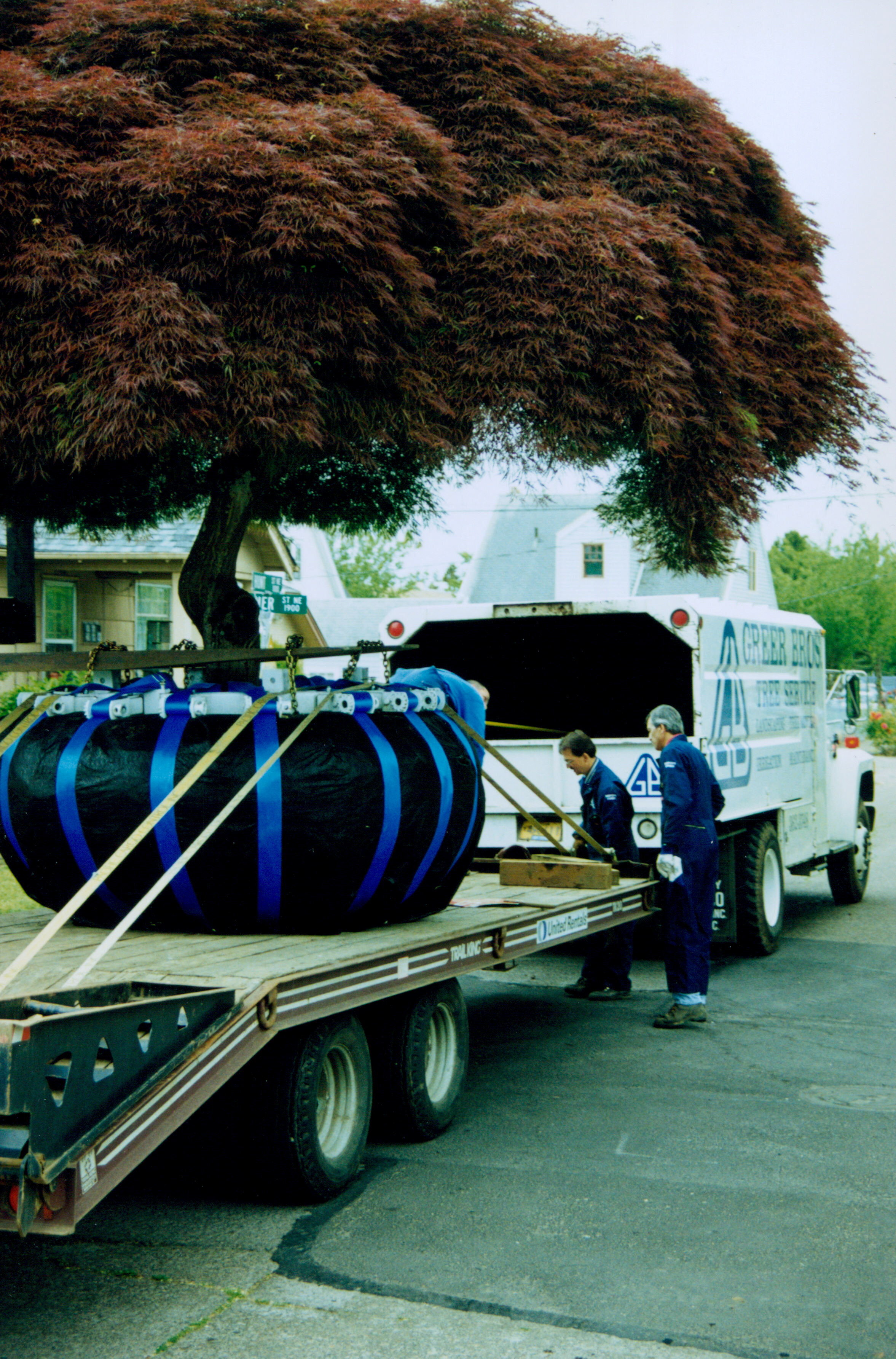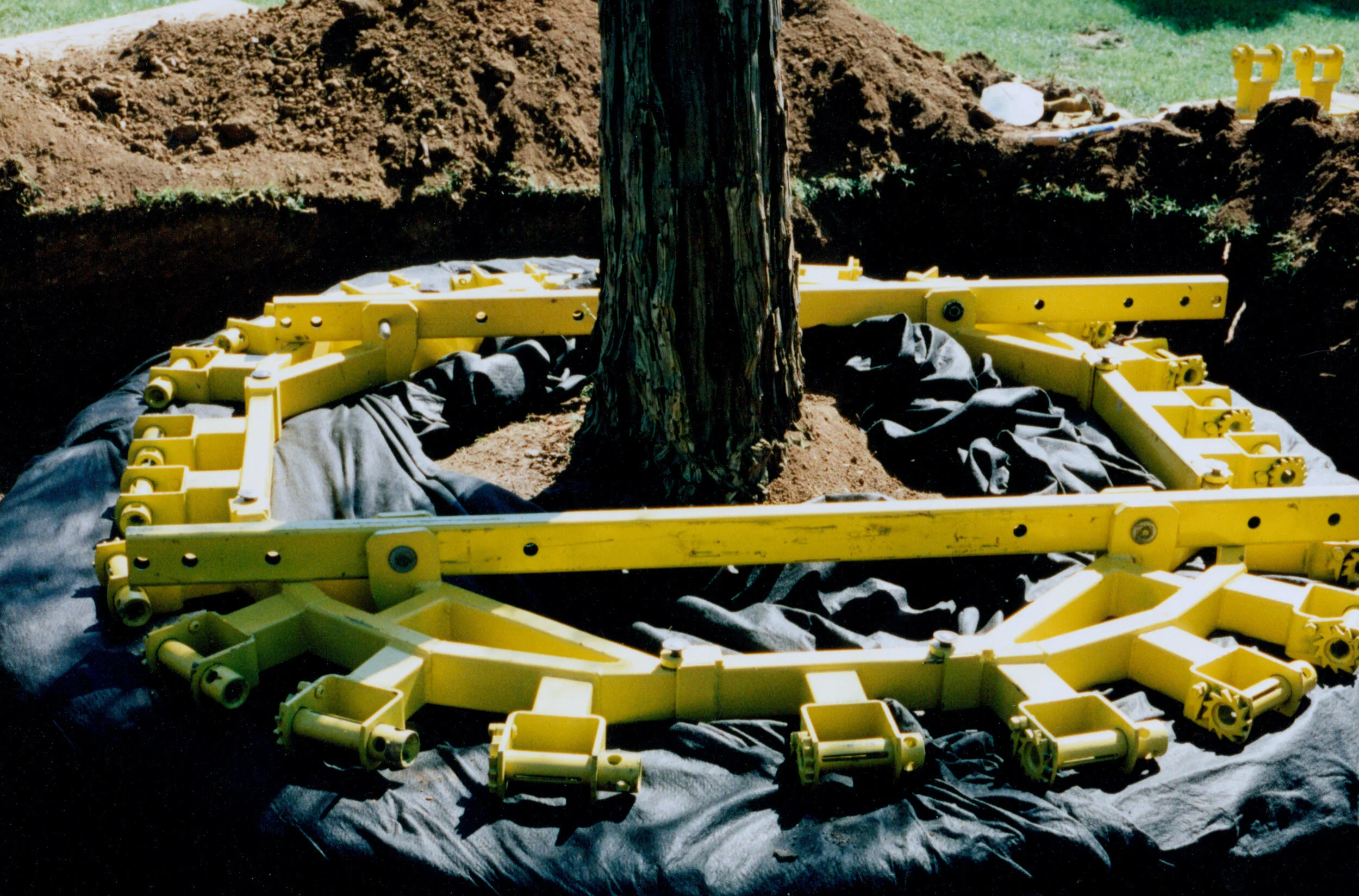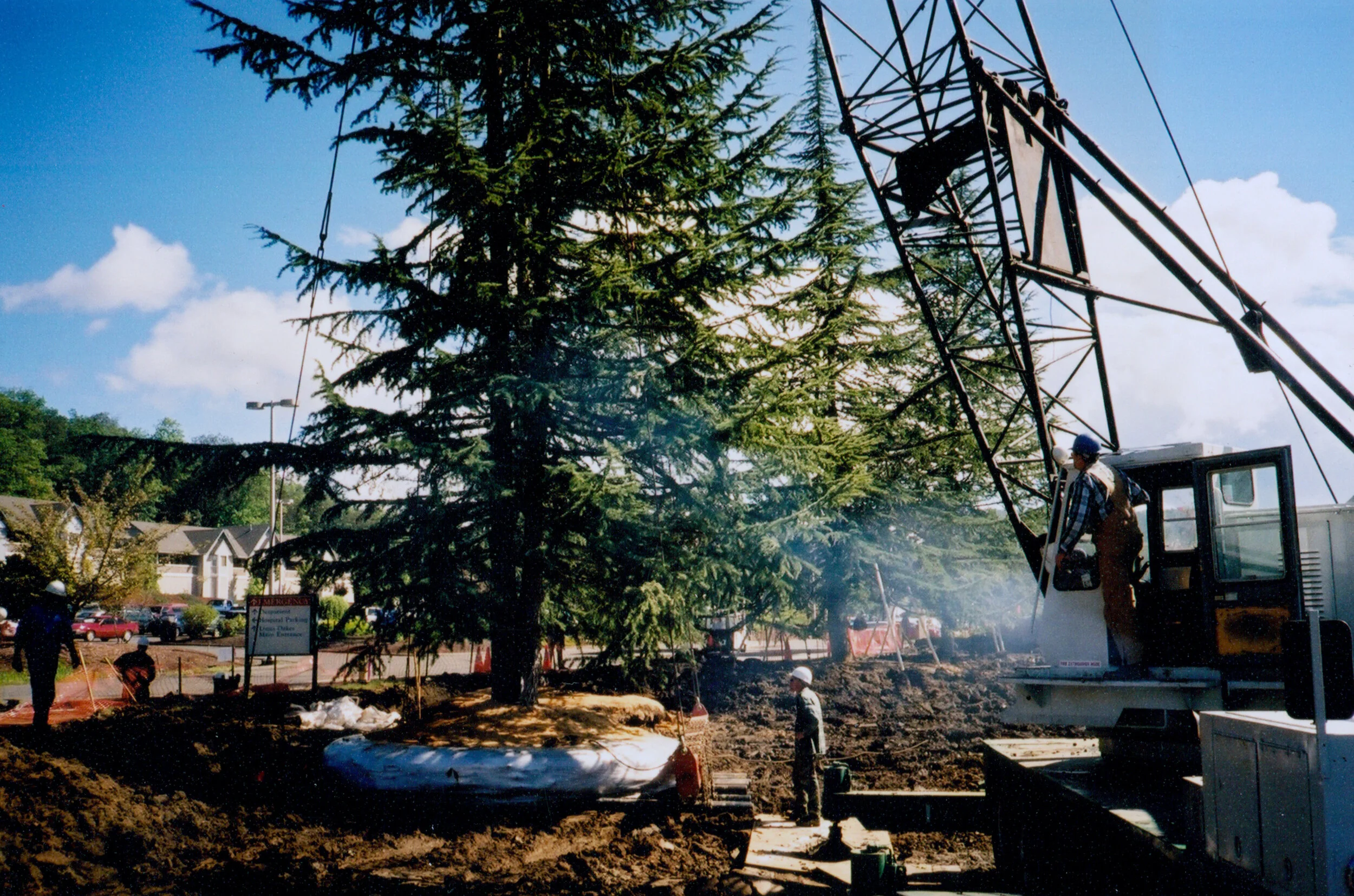8 minute read.
Note: These pricing methods do not apply to orchard settings. For orchard pricing or if you’re ready to have your tree moved, please fill out this form so we know what we’re dealing with and we’ll be in touch with an approximate price. But it would be helpful if you read this article so you know what to expect :)
(For information on the likelihood of a tree surviving a transplant check out this article.)
So you want to relocate a tree. But what does it cost to relocate a tree? And who the heck can do it? Well, the answer to the latter question is at least a certified arborist. 70+ years experience in the field as large tree relocating experts and four generations in arboriculture doesn’t hurt either (Hint: that’s us!). And if the business of tree moving had roots you would find they run right through our modest property in Salem, Oregon.
The answer to the primary question of cost is a little less obvious. Like many service-based businesses the answer is an annoying “It depends.” Moving a tree is dependent on a number of variables and can cost anywhere from $100 to six figures. Sometimes more. Our only limitation is your budget. If you want the tree moved to the moon we can do it. We won’t guarantee it will survive but we can make it happen.
In this article, I’m going to present seven hypothetical scenarios, each highlighting specific variables and site conditions that contribute to how we formulate a price. At the end of the article, you should have a good idea of where your project fits and an estimated price range. Let’s dig in.
The species and size are the first components we look at as they will tell us what we need to know to employ the best methods. Generally speaking, any tree with a trunk-diameter (caliper) under 10” is movable with a spade. Whatever we can’t move with a spade, we’ll use good old fashioned labor and heavy equipment to dig and transport it.
In this first hypothetical we’re going to assume all conditions are ideal. The ground is dry, solid, relatively level, the soil is easily diggable, there are no obstructions to our access to the tree or the planting site, we don’t have to trim any branches, there are no power lines we need to maneuver around, and within Salem, OR city limits we’re traveling up to 10 miles from point A (tree pickup) to point B (planting site). Let’s use a Maple tree in this example.
This Maple is 13’-15’ tall with a 5” caliper trunk. It’s alone in the middle of your yard and you want to move it closer to your fence to block the view of the road and closer to a few other tree friends. It’s a relatively quick dig. We first dig out a “plug” in the location you have selected, dump the plug next to the tree to be moved, dig out the tree with our spade, place it in the previously excavated hole, then fill the previous location of the tree with the plug. Easy peasy.
We’re adding $400(+/-) on the invoice for that one tree.
Now let’s imagine you’ve got a 15’-18’ Cedar with a 5.5” caliper trunk. But instead of ideal conditions, there are a few obstructions that make things a little more difficult. As with all digging projects, locating underground utilities is a necessity. And in this case, we find that a gas line runs right through the rootball. We will have to coordinate with the gas company to come out and decommission that line before we dig up the tree then have them repair it before we backfill the hole.
Fortunately, conditions are still dry and even though it is sitting on a slope our truck can drive to and wrap the spade around the tree. But once we start digging we discover that the spade hits a large rock. Our machine operator and crew tried to remove it themselves but couldn’t even do it with a shovel and their best deadlift technique. So we’ll need to bring in another crew member with a backhoe.
Our invoice will read somewhere in the neighborhood of $450-$1450 for this job.
In this example, we’ll use a 25’-30’ Ornamental Oak with a 9” caliper trunk. We’re using our biggest spade and the minimum price to get the spade onsite is $800. This job is on the more complicated end and this particular oak has a canopy structure that requires trimming for our spade to gain access. Not only is the tree sitting on a slight slope but it has been raining all week and the ground is wet and muddy and to get from the main road to the tree itself requires laying down plywood and traction plates under the tires as we go to make sure our cement truck-sized vehicle doesn’t get bogged down in the mud. A better time of year would be ideal but that helicopter pad you’re building is on a deadline and the tree needs to move. Now. And as this requires prioritizing your job over others, priority rates will apply.
So here we are. And your landscape architect decided the tree would look good at one of your developments 29 miles out of town where we have already dug out a plug for this tree. After digging the plug (we also had to use traction plates here), driving back to the pickup location, digging up the tree, tarping and tieing the branches down for transport so that the tree doesn't get windburnt, driving back to the development, planting it in its new home, then backfilling the pickup location you’re looking at around $3,600.
*We're also going to use guy wiring and stakes to keep it in place and make adjustments as required for a year after or so because this part of town is known for windy conditions and the weight of the rootball may not be sufficient to keep the tree in place. $500-$800 for the entire year.
Hand digging is used when the trunk diameter exceeds the spade’s capacity or if a spade can’t access a tree.
For example, you have an 8’ tall Weeping Japanese Maple (Acer palmatum dissectum) with a 5” caliper trunk and a 16’ diameter canopy that is right next to your house and you want it moved to a different part of your property. Spade access is ruled out because of the branch structure and your single level roof overhang. We may not want to use a spade anyway because trimming enough to get the spade around it will diminish the aesthetic and will take years to regain its former beauty. So digging it out by hand is the better option.
It will be labor-intensive and require a skid steer (bobcat) and maybe a truck and trailer depending on site conditions. We’ll also need to care for the rootball and wrap it up so it doesn’t crack during transport. An experienced crew under ideal conditions should be capable of digging the tree up, wrapping the rootball, getting it ready for transplant, planting it in its new location, backfilling the hole left by the tree, and cleaning everything up in one day. For that, you’re looking at approximately $2500.
*The same tree transported 50 miles away would be a different story. We would need to prep it for transport which would include tying it down, wrapping a tarp around it so it doesn't get windburnt, and acquiring an "over-width" permit to make it street legal. Between the above expenditures and the time to prep the new site, an additional $4,500 or so would not be unreasonable. 150 miles? Bump it up to $15,000ish.
Okay. Third to last example. Grandma planted an Ornamental Maple in the back yard that has grown to 40’ over the years. It’s sentimental and you don’t want to cut it down. Plus it’s pretty. But it would really look better in the front yard. And it happens to be inconveniently placed right where you’ve always wanted to build an addition to your home. The problem here is that we can’t get a spade to it and we can’t lift it with a bobcat. Even if we could, it’s not going to fit through the sliver of a pathway from the front driveway to the back yard without knocking over a light pole or running a branch through your neighbor's window. So what to do?
In this case, we would have to dig it out by hand and lift it with a crane over the house. One crew plus materials (i.e. a crane rental) for this project would be in the neighborhood of $19,000.
Next, the city has decided that an underground parking structure has to be constructed right next to a majestic protected Redwood and you're in charge of putting the project together. You could hire a General Contractor and trust that all will go well but they may or may not consult an experienced arborist about best practices for digging around tree roots which may or may not end in a dead tree once the structure is built (Read: They’ll kill the tree. This has happened before). Oops.
Well, Redwoods are tall. This one happens to be 50’ tall and it’s sitting between a parking lot and a main street that runs parallel to the state capital. And it's on state property which puts this project into a publicly-funded category and increases our costs. We’ll be excavating parts of the parking lot, the landscaping, sidewalks, and the street. We’ll also need a special permit to shut the street down for the duration of the project.
Our crew has dug out a new home for the tree 150’ or so away from its current location, one of our climbers has wrapped the tree in guying wire and staked the surrounding landscape to keep the tree in place while we dig, and we have begun digging out the existing root ball. Once the rootball is formed and wrapped we rig the rootball and tree for lifting by crane and begin the slow process of moving the whole unit to the new location where we will plant the tree and guy cable it long enough to give the new root system time to establish itself (we recommend one to two years depending on site conditions and a few cable adjustments over that duration). We'll then transport all the soil from the excavated site back to the original location of the tree and backfill it. But reconstructing the road, the sidewalk, or the landscaping is not included in our contract.
Assuming all goes well, the project should take upwards of a week and the cost will be approximately $67,500. A private project of the same scope would be around $50,000.
*This project would be a good candidate for root pruning. 3 months to a year beforehand would be ideal and in this case. Twice should be sufficient during that time. Doing so would force the tree to grow new feeder roots within the rootball to be excavated sufficient enough to improve the tree's likelihood of survival after transplanting. Each round of pruning will be $3,000-$5,000(+/-) (Prevailing wage figured into job costs). Standard rates would be about approximately 30% less.
This last example is based on a real project we did several years ago. The project consisted of 5 large Deodar Cedars ranging from 35’-50’ tall with 18”-24” trunk caliper. Included with these were 10 Flowering Cherries with 10”-14” trunk caliper. None could be moved with a spade and the founder of the company had planted them so the company was willing to go to the expense of having them relocated during their office expansion. All of them were on relatively level and dry ground and all utilities had been turned off.
They had planned the project far enough in advance that they took our recommendation and allowed us to prune the roots of each tree. Each tree also needed a custom frame made of steel pieced together on-site and capable of supporting the integrity of the rootball and the weight of the tree. We then used heavy equipment to lift each one and transport them to previously excavated planting sites. None of the depressions left by our work needed backfilling or transporting dirt offsite as the company needed to excavate the area for their expansion anyway.
After the completion of the project, we maintained the trees for an additional year making sure the guying cables were tight enough to support the trees in their new location, we fed the trees with root stimulating fertilizer, and made sure the trees were on a consistent watering schedule.
When all was said and done the entire project had a price tag of $309,800 (adjusted for inflation).
So there you have it. If you have any further questions feel free to check out our tree moving FAQ page or if you wish to get a quote for your project please fill out this form and we’ll be in touch.




